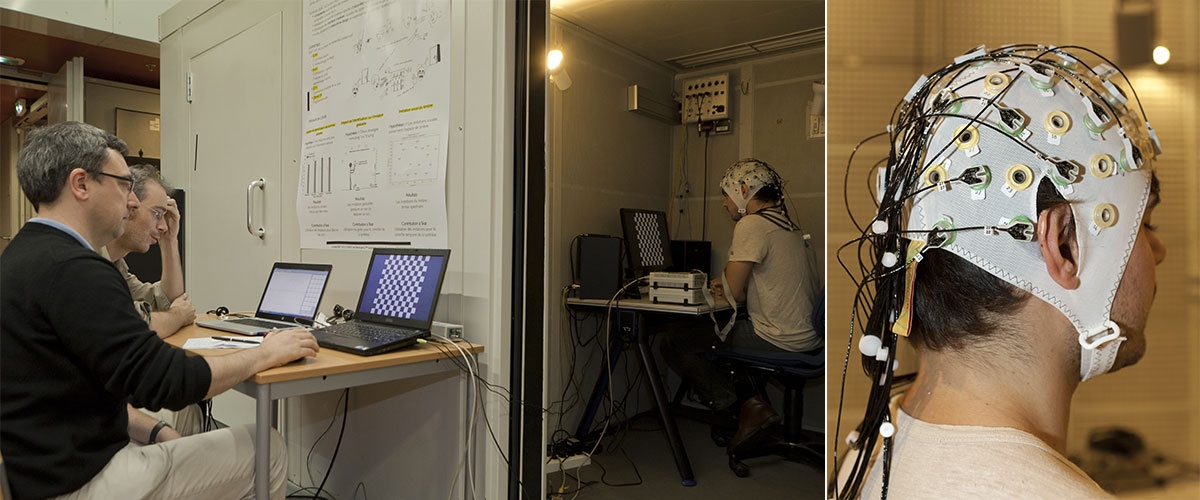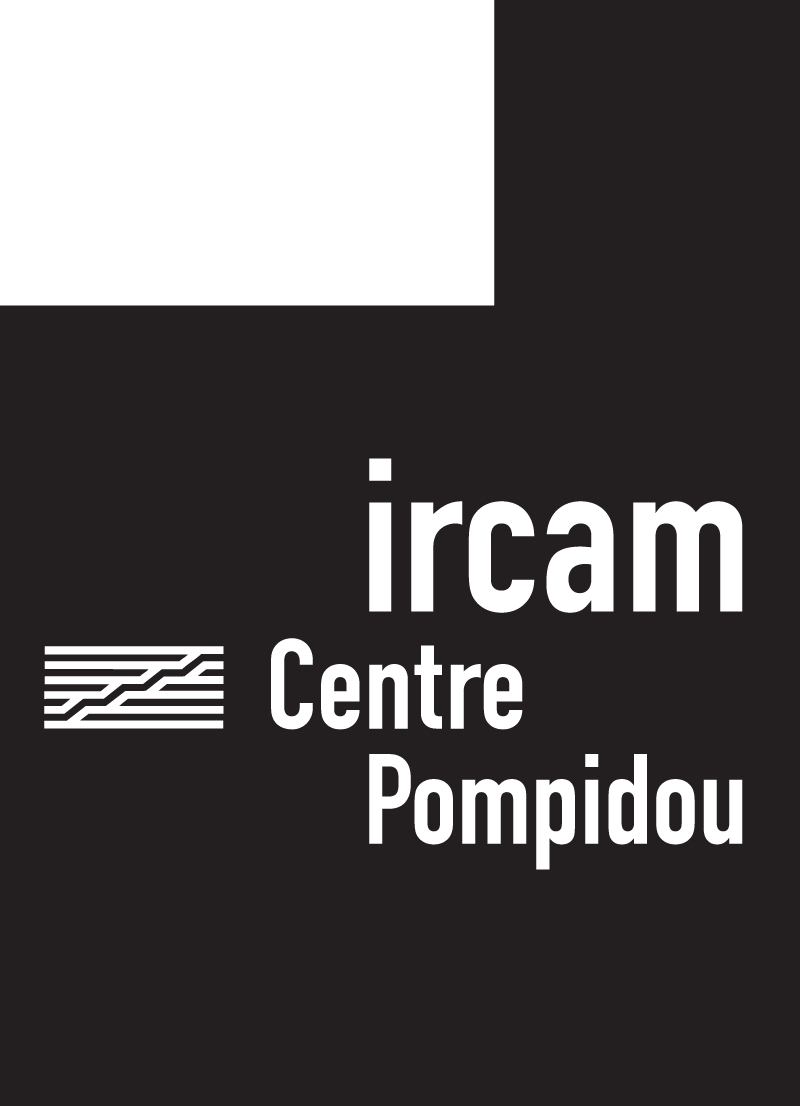Sciences
Scientific Events
- Emotional Archetypes: Music and Neurosciences, International Scientific Symposium | Wednesday 8 & Thursday, June 9
Music holds a strange power over our emotions. Through a sentence or texture, a sound event erupts, an attack, a trembling, sometimes only a lonely sigh, and suddenly our entire psychology is turned upside down. "Coming face-to-face with music" is rarely a question of life or death, but our biological reactions can be similar to those during survival situations. This encounter compares and contrasts contributions from neuroscientists and composers, notably during shared listening sessions, on the question of musical archetypes, debating what the "musical survival kit" would contain, the essence of what makes an event (physiological) in music.
Organization: Jean-Julien Aucouturier (Perception and Sound Design team at IRCAM-STMS, ERC CREAM project)

The Perception and Sound Design team with the EEG cap
- Innovation in Instrument-Making, Professional Day | Saturday, June 18
In a context rich in recent developments on acoustic instruments to which IRCAM contributes significantly, this aim of this day consists of comparing different points of view from constructors, scientists, engineers, and performers on the question of innovation in different aspects of instrument-making: technical, economical, sociological, etc. The interventions by these different parties will be accompanied by demonstrations of recent innovations.
Organization: Adrien Mamou-Mani (Instrumental Acoustic team at IRCAM-STMS)

SmartInstrument at IRCAM © Déborah Lopatin
- When the Guitar Electrifies! (Itself), Colloquium | Thursday 23 & Friday, June 24

"Instrument of desire" and symbol of modernity in the 1950s, the queen of rock & roll and blues shook up both lifestyles and thinking. Today, several different communities are interested in the guitar (instrument makers, guitarists, collectors, scientists, composers, performers), increasing our knowledge of the instrument and its rich and complex repertoire. Talks will address the following subjects: instrument making, repertoires and practices, venues and environments.
Keynote Speakers: Steve Waksman, Professor of music and American studies at Smith College and André Duchossoir, "vintage" guitar specialist.
Photo: Guitare électrique Telecaster Fender, Fullerton, Etats-Unis, 1953. Photo : Jean-Marc Anglès © Musée de la musique
- Towards a Treatise on Interactive Orchestration, Research and Composition Conference | Wednesday, June 29
One of the most complex and mysterious aspects of musical composition is its reliance on orchestral timbre. While orchestration practices rely largely on empiric knowledge, collective advances in the psychology of perception and computer music have resulted in new tools to analyze the repertoire, study the perception of orchestral effects, and elaborate general models to facilitate teaching orchestration (and orchestrating) using new technologies. During this session, an international team of scientists and musicians will present a project based on these scientific concepts that aims, in the end, at the production of a treatise on interactive orchestration, based on the state of the art of computer tools for orchestration assistance. Composers associated with the project will illustrate the issues of this study for contemporary creation using examples made with existing tools.
Coordination: Stephen McAdams (McGill University, Montreal), Éric Daubresse (Haute école de musique, Geneva), Philippe Esling (Musical Representations team at IRCAM-STMS).

